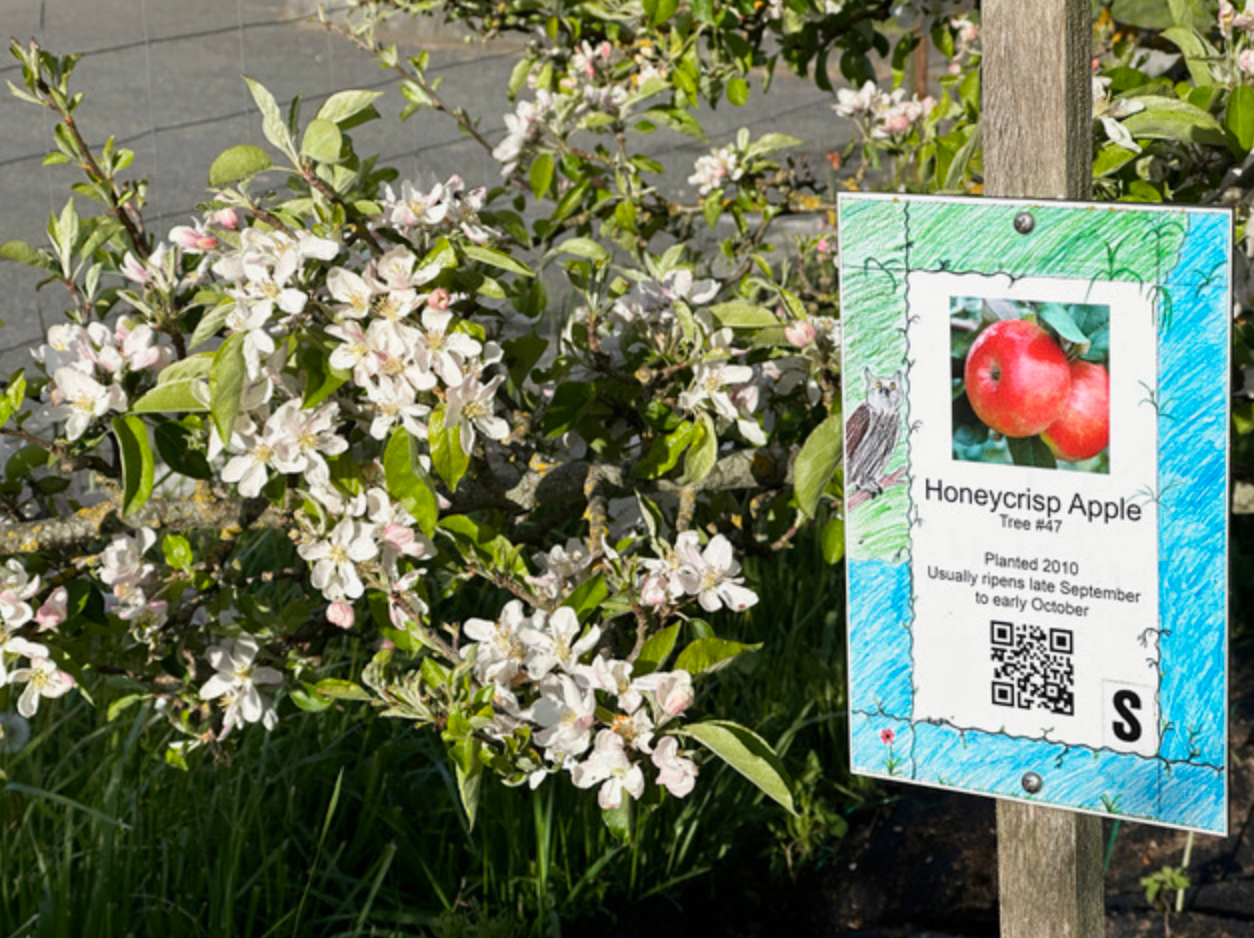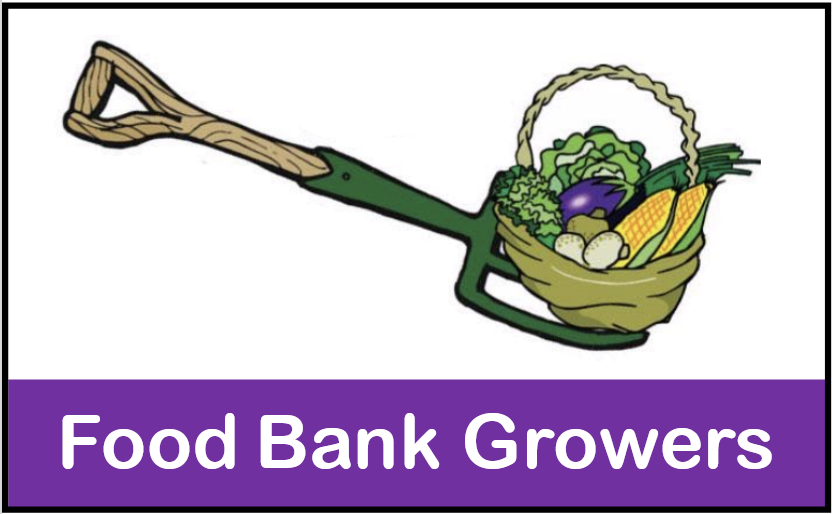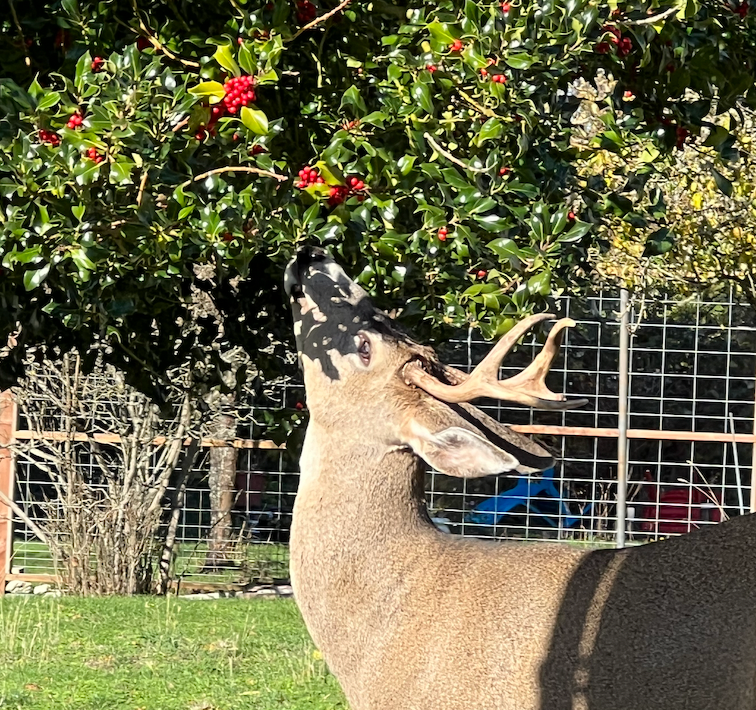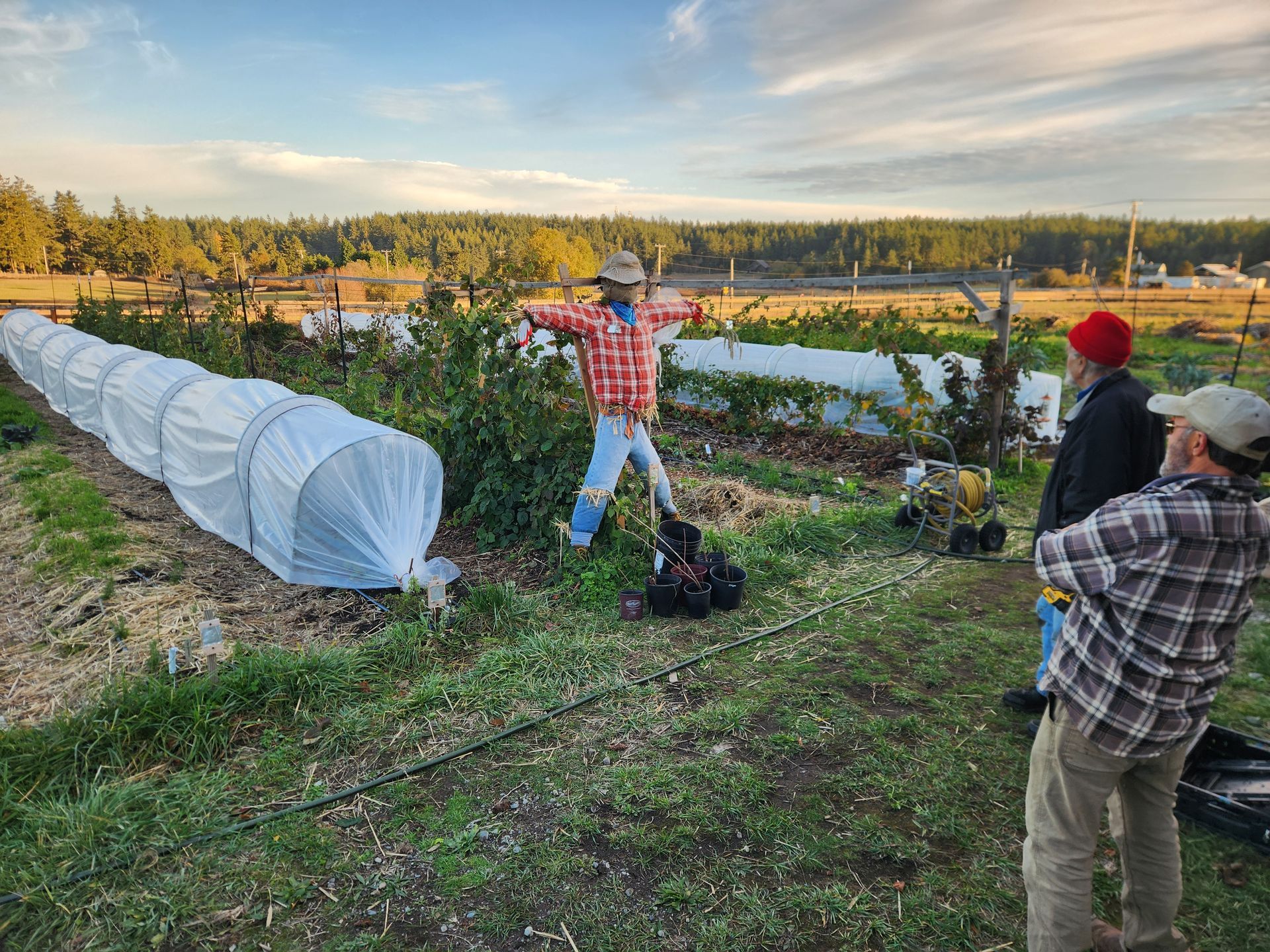Thinning Fruit Trees...

For a More Abundant Harvest
Garden Notes
For The Port Townsend Leader: May 8th 2024.
by Katherine Darrow
One of the glorious spectacles of spring in Jefferson County is the flowering fruit trees that grace home gardens and small orchards throughout our towns and rural areas. Cherry, plum, pear, apple, fig, and even a few peach and quince trees share their abundance with us year after year, inspiring many a pie, jugs of cider, jams, jellies and sauce to savor through the winter.
At Blue Heron Middle School in Port Townsend, Quimper Community Harvest, aka PT Gleaners, have planted and cared for a small orchard of 70 trees since 2008, creating an outdoor classroom where students of all ages can learn how to tend and harvest organic fruit. We all look forward to the harvest, but as any orchardist will tell you, there are seasonal chores that need to be done if you want to produce good quality fruit.
Mulching, watering, pruning, weeding, grafting, pest control, and thinning are some of the ways that Gleaners volunteer their time to nurture and care for the orchard, sometimes with the assistance of students from local schools, as well as the school groundskeeper. At the end of the season, students and volunteers are rewarded with the joyful chores of harvest and cider-making parties.
Most plums and pears have finished blooming by this time of year, but many apple trees are still in full bloom through mid-May. Pollination is key to success now, and will also determine how much thinning needs to be done.
To better understand why orchardists thin fruit, it is helpful to understand that the purpose of fleshy fruit for a tree is to attract animals that will eat them, and thus disperse the seeds for a new generation of genetically diverse trees. Lots of smaller fruits means more seeds, and more opportunities for dispersal.
However, seed production and dispersal are not primary aims for humans to grow fruit trees. We cultivate fruit for flavor, texture, and abundance, as well as nutrition. When we thin out the smaller fruits and space them out along the branches, the tree can allocate more resources to each one, making larger, sweeter, juicier fruit. A tree will produce about the same poundage of fruit whether thinned or not. The question is, do you want 120 nice-sized sweet, juicy apples, or 400 small apples that have large seed cavities and not much flesh?
“Another important reason someone should consider fruit thinning is that it will change a tree from the biennial cycle of overproducing one year and nothing the next,” says Seth Rolland, lead orchardist at Blue Heron. “We see this on almost every apple tree we glean, yet it never happens at the school orchard.”
Most trees will naturally abort fruit that is under-pollinated, since it is counterproductive for the tree to allocate sugar and water to fruit with no seeds. “June drop” is a term for trees naturally dropping some of the under-pollinated fruit. This can also occur later in the season, depending on the variety of the apple.
Large commercial orchards that manage hundreds or thousands of trees often use chemical thinners to reduce pollination or promote early fruit drop. This involves spraying the trees while they are still in bloom, or in fruitlet stage, enveloping the tree in a misty cloud of chemicals that often includes pesticides and fungicides. Hand thinning increases time spent in labor, so can be much more expensive for commercial growers. This is one reason organic fruit is pricier at grocery stores.
“We still thin our crop by hand, every single one of our 6000-plus trees. It's a big project but the quality and reliability of hand thinning is more dependable than chemical thinning,” says Shay Hohmann, orchardist with Finnriver Cidery in Chimacum.
Homeowners with single trees and small orchards are better off hand thinning, which also has the benefit of getting to know your trees better. The timing and abundance of flowering for each tree will vary between type, variety, and location. Attention to peak bloom and petal drop are clues to when to attend to thinning, which is best done between 4-6 weeks after peak bloom.
If you look closely at the flowers on an apple tree, you’ll notice that they are in clusters of 5-7 flowers. The central one is the first to bloom, also called the “king blossom.” This is usually the one we keep, as long as it has successfully been pollinated.
“We usually thin in the first two weeks of June when the fruit is around nickel size,” advises Rolland. “We leave the largest and healthiest fruit from each cluster, thinning to one fruit every 4-8” for apples, peaches and pears and a little denser for Asian pears. We don’t thin plums, figs or cherries.”
Thinning can be done with a small pair of garden clippers, or with a simple flick of the thumb and finger, being careful not to break branches. It may seem like you’re taking a lot of your potential harvest at first, but “less is more,” says Tom Pendley, a member of the gleaning team who grew up on a commercial orchard in Arizona. “Dad always said you’ve got to be strict on thinning.”
PT Gleaners welcomes folks who would like to help manage Blue Heron Orchard or join the team during harvest and delivery of fresh, organic, locally grown fruit. Learn more about PT Gleaners and Blue Heron Orchard at https://www.foodbankgrowers.org/gleaning#Gleaning
Katherine Darrow is a Jefferson County Master Gardener and member of the PT Gleaners, working with other volunteers who serve as community educators in gardening and environmental stewardship.



